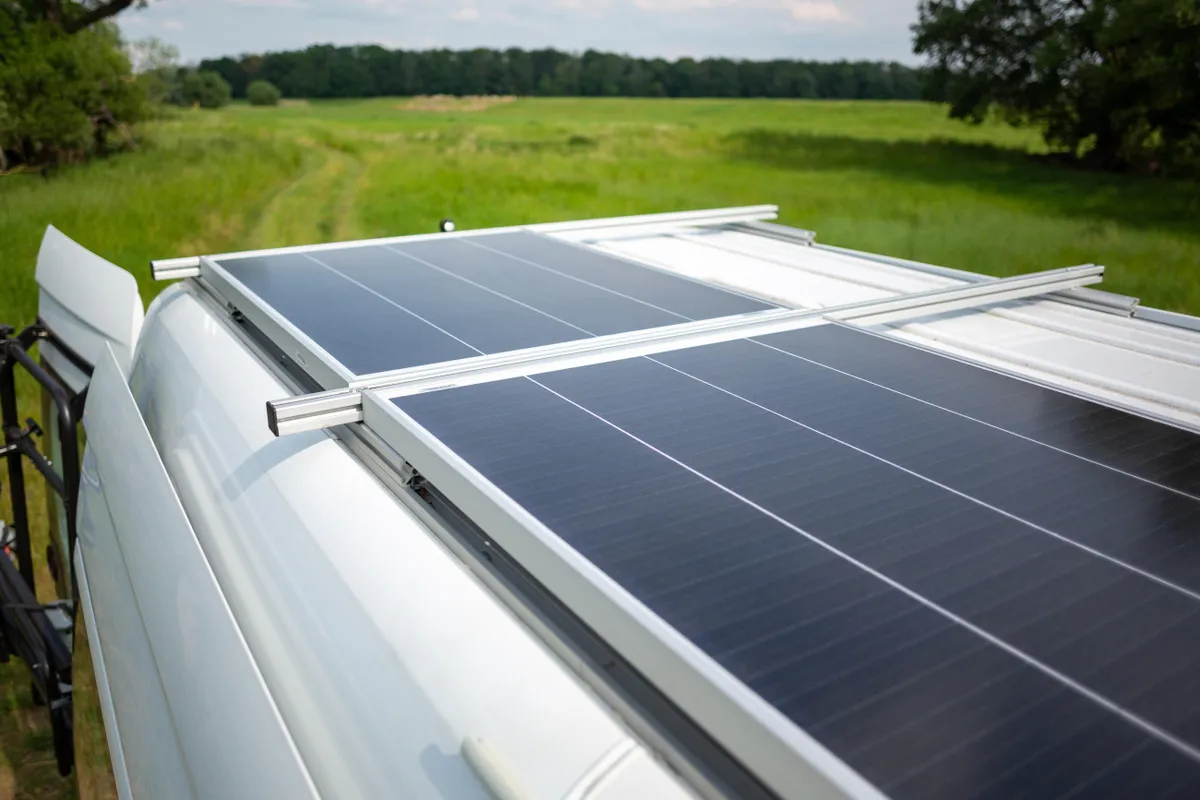Solar power is an increasingly popular choice for RV enthusiasts who want to stay off the grid and enjoy the freedom of independent energy sources. Installing a solar power system in your used RV can enhance your comfort, reduce reliance on external power sources, and make your travels more sustainable. Here’s a guide on how to effectively use solar power in your RV.
1. Assess Your Power Needs
Determine Power Requirements: Before installing a solar power system, assess your RV’s power needs. Identify the appliances and devices you plan to run using solar energy, such as lights, refrigerator, or electronics. Calculate the total wattage required to ensure your solar setup can handle your energy consumption.
Evaluate Battery Capacity: Your RV’s battery capacity will affect how much solar power you can store and use. Ensure you have a battery bank that can store sufficient energy to meet your needs. Consider upgrading to deep-cycle batteries if necessary for better performance.
2. Choose the Right Solar Panel System
Types of Solar Panels: There are three main types of solar panels to choose from:
- Monocrystalline Panels: Known for their high efficiency and compact size, making them ideal for limited space.
- Polycrystalline Panels: Slightly less efficient but more affordable, suitable for larger roof spaces.
- Thin-Film Panels: Flexible and lightweight, but generally less efficient and best for specific applications or limited space.
Panel Size and Quantity: Choose the size and quantity of solar panels based on your power requirements and available roof space. Larger panels or multiple panels will generate more power, but ensure they fit your RV’s roof and are compatible with your setup.
3. Install Solar Panels
Roof Placement: Install solar panels on a flat, unobstructed section of your RV’s roof. Ensure that the installation area is clean and free of debris for optimal adhesion and performance.
Mounting Options: Solar panels can be mounted using adhesive or mounting brackets. Adhesive mounts are simpler but less secure, while brackets offer a more robust and stable installation. Ensure that your mounting method is compatible with your RV’s roof material.
Professional Installation: If you’re unsure about the installation process, consider hiring a professional. They can ensure that the panels are installed correctly, connected to the system, and optimized for performance.
4. Set Up the Solar Power System
Solar Charge Controller: Install a solar charge controller to regulate the amount of power going from the solar panels to the battery bank. This device prevents overcharging and extends the life of your batteries.
Inverter: An inverter is necessary to convert the DC power generated by the solar panels into AC power that can be used by your RV’s appliances. Choose an inverter with sufficient capacity to handle your power needs and ensure it’s compatible with your battery bank and solar setup.
Wiring and Connections: Properly wire and connect the solar panels, charge controller, batteries, and inverter. Use high-quality, appropriately rated wires and connectors to ensure a safe and efficient system.
5. Monitor and Maintain the System
Regular Monitoring: Keep an eye on your solar power system’s performance using a monitoring system or display provided by your charge controller. This will help you track power generation, battery levels, and overall system health.
Clean Solar Panels: Regularly clean your solar panels to remove dust, dirt, and debris that can reduce their efficiency. Use a soft cloth or sponge with mild soap and water to gently clean the panels without causing damage.
Inspect Components: Periodically inspect all components of your solar power system, including the panels, wiring, charge controller, and inverter. Look for signs of wear or damage and address any issues promptly to ensure optimal performance.
6. Optimize Solar Power Usage
Energy-Efficient Appliances: Use energy-efficient appliances and LED lighting to maximize the effectiveness of your solar power system. Reducing power consumption helps extend the time your battery bank can supply power and reduces reliance on external sources.
Power Management: Be mindful of your power usage and manage it effectively. Use high-power appliances sparingly and prioritize essential devices. Consider using solar power for specific tasks or during peak sunlight hours to optimize energy use.
Battery Management: Ensure your battery bank is properly maintained and charged. Avoid deep discharges and keep batteries at an optimal charge level to extend their lifespan and performance.
7. Enjoy the Benefits of Solar Power
Increased Independence: Solar power provides greater independence from campground power sources and reduces reliance on generators. This allows you to camp in more remote or off-grid locations with confidence.
Sustainable Energy: Using solar power is an environmentally friendly choice that reduces your carbon footprint and reliance on fossil fuels. It contributes to a more sustainable RV lifestyle and promotes conservation.
Cost Savings: While there is an initial investment in solar panels and related equipment, solar power can lead to long-term cost savings by reducing the need for fuel or campground electricity fees.
Conclusion
Integrating solar power into your used RV can significantly enhance your travel experience by providing a reliable, renewable energy source. By assessing your power needs, selecting the right solar panel system, and properly installing and maintaining the components, you can enjoy the benefits of solar energy while on the road. Embrace the freedom and sustainability that solar power offers, and make the most of your RV adventures.










